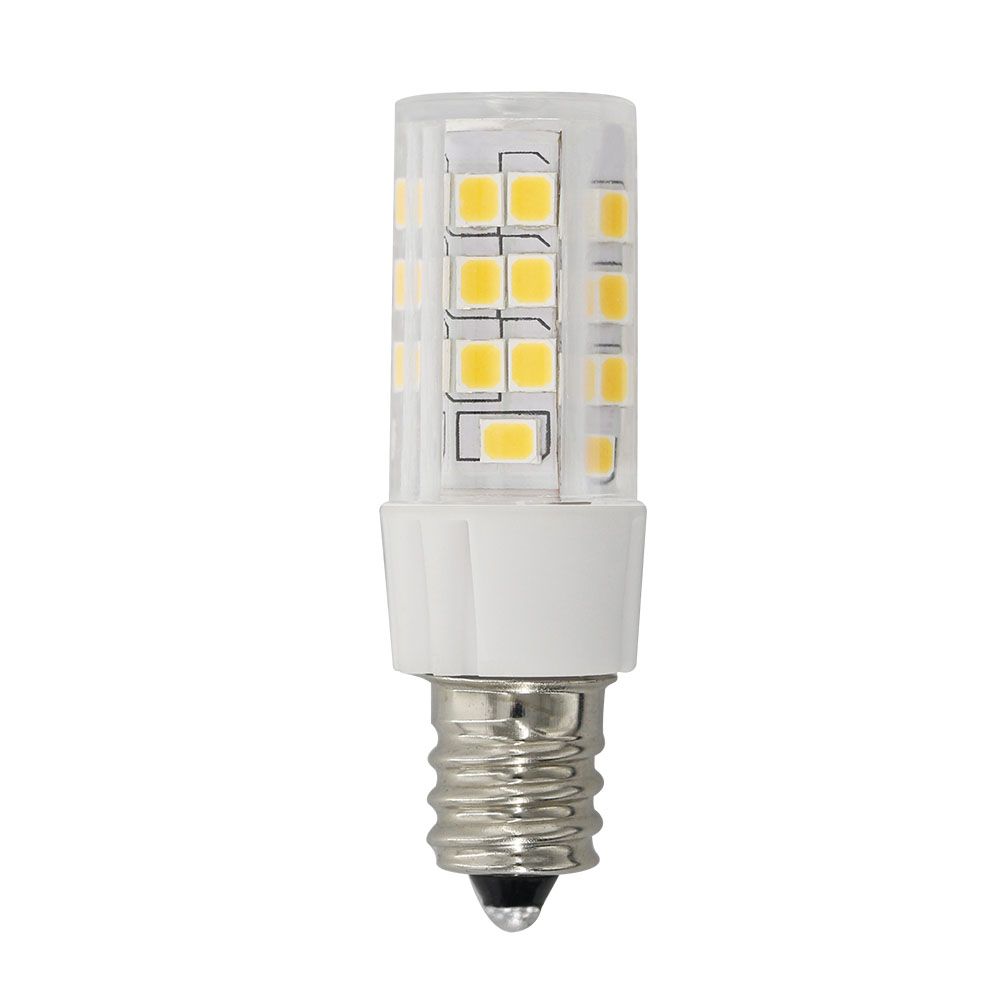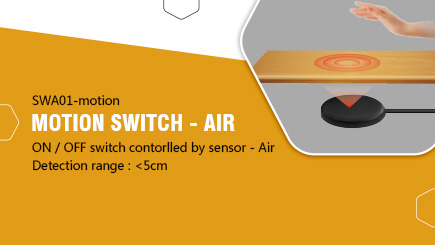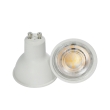Application of LED in Tunnel Lighting
2017-05-23 11:08:18
Tunnel lighting is to ensure the smooth traffic within the tunnel and set the functional lighting, the purpose of the lighting is to the driver in the tunnel driving process to provide a safe and comfortable visual environment, to ensure traffic and improve transport efficiency.
The visual phenomenon within the tunnel
When the driver drives the vehicle into and out of the tunnel during the day, the "black hole effect" and "white hole effect" are generated. When the car approaches a long tunnel, the brightness of the sky, open air, and nearby buildings in the driver's field of view is much higher than that of the tunnel. In the role of induction, although in fact the hole also has considerable brightness, but the driver still feel the black hole, like a "black hole", so that can not identify the hole near the situation, even the obstacles are difficult to find, this phenomenon For the "black hole effect". The opposite "white hole effect" is from the tunnel to the dark environment to the outside of the tunnel more bright environment, feel the strong glare, can not immediately see the situation outside the tunnel.
You can describe these two phenomena very simply:
When we immediately entered a weak room from a bright environment, we almost could not see the situation in the room, and slowly waiting for a short time, our eyes suddenly adapt to the dark room environment, to See the situation inside, this is the "black hole effect";
And when we are from this dark room immediately went outside the room, we are squinting, to avoid direct light into the eye, and then slowly opened his eyes to see the surrounding environment, which is "white Hole effect ". Therefore, to make the human eye vision out of the tunnel to keep clear, so that motor vehicle drivers feel psychological and visual comfort, requires the tunnel brightness and the natural light outside the tunnel there is a good transition and convergence between the use of human visual characteristics Designed to meet the human eye to adapt to the curve of the tunnel brightness adjustment.
From the structure of the eye we can see that the cells have two kinds of pyramidal cells and rod cells. The sensitivities of these two cells are different for light. The sensation of light is high in rod cells and the sensitivity of pyramidal cells to light is very low. In the bright environment (brightness up to 10cd / m2), mainly by the cone cells involved in visual work, this visual state known as the vision; in the dark environment (brightness of 10-2 ~ 10-6 cd / m2) , Mainly by the rod cells involved in visual work, this visual state called dark vision. When the brightness is 10-2 ~ lOcd / m2, the rod cells and the pyramidal cells work at the same time. Cone cells and rod cells have different sensitivities to light, and pyramidal cells are most sensitive to 555 nm light, and rod cells are most sensitive to 507 nm light.
Eyes not only in the sunlight to see the object, in the moonlight can see the object, which is mainly with the pyramidal cells and rod cells exchange work, the size of the pupil and the changes in the retina and other factors on the chemical changes. When the brightness within the visual environment has a more substantial change in the visual environment within the visual changes in the sensitivity of the time known as adaptation. Adapt to the appropriate adaptation and dark adaptation of two. People from the dark into the bright environment, the initial will feel dazzling, and can not see the surrounding scenery, but after a while can return to normal vision, this adaptation is called adaptation. People from the bright environment into the dark, in the initial stage will be invisible, gradually adapt to the dark after the object to distinguish between the contours. This process from the bright to the darkness of the visual threshold of the process is called the dark adaptation. The adaptation time required for adaptation and dark adaptation is short and short, usually from time to time, from a few seconds to several tens of seconds; the time required for dark adaptation is long and generally 30 minutes to stabilize The
Lighting requirements within tunnels
A lighting device is usually required when the tunnel length is greater than 100 m. As the tunnel is a semi-enclosed space, the tunnel in the driving visual characteristics than other lighting is much more complex, it requires not only 24 hours of continuous lighting, and daytime lighting is more complicated than the night lighting. Tunnel lighting has the following characteristics:
(1) Segmental lighting
Segmental lighting is the most significant feature of tunnel lighting. This is due to the daytime tunnel and the external road light environment has undergone great changes, the vision needs a certain time to meet the road to see the situation. Therefore, in order to allow the driver to have a good visual transition at both ends of the tunnel, the tunnel lighting is divided into several different lighting sections: the entrance section, the transition section, the middle section and the outlet section, and the road section of each lighting section Brightness levels are different. Which the entrance section, the transition section of the road brightness level needs to be determined according to the tunnel outside the brightness.
(2) to avoid the smoke effect
Due to the internal ventilation conditions of the tunnel, the exhaust gas discharged from the vehicle is not easily diluted rapidly, and it is easy to accumulate and form smoke, resulting in smoke effect. Therefore, in the tunnel lighting design and light source selection should consider its impact.
As the tunnel lighting has the above characteristics, China's current industry standard "highway tunnel ventilation lighting design specifications" on the tunnel lighting and light lamps made the following requirements:

① Under normal circumstances should choose high efficiency, through the fog performance of light source.
② short tunnels, diesel vehicles less near the town of tunnels, emergency stop belt, pedestrian cross channel, car cross channel can choose RA> 80 light source.
③ lighting accessories installation should be easy to operate, and can adjust the installation angle.
④ light source life should not be less than 10000h.
⑤ lamp protection level should not be lower than IP65.
⑥ the middle section of the lighting arrangements should meet less than 2.5Hz or higher than 15Hz flicker frequency.
⑦ lamps should be suitable for the characteristics of highway tunnel anti-glare device.
⑧ lamp structure should be easy to replace the lamp and accessories.
⑨ lighting parts should have a good anti-corrosion properties.
⑩ lamps shall not penetrate the tunnel building boundaries.
Implementation of tunnel lighting
Tunnel lighting to achieve energy conservation, improve lighting effects and to ensure traffic safety and comfort, usually from the following aspects to consider:
(1) brightness
Since the brightness of the daytime tunnel is much higher than that in the tunnel, when the driver enters the tunnel by car, the visual needs a certain amount of adaptation time before the tunnel can be seen. This phenomenon is called "adaptive hysteresis" The If there is no appropriate transition, it will produce a "black hole" phenomenon, so that the driver temporarily lost normal visual function, which brings some security risks. The "black hole" phenomenon is the visual problem that occurs before entering the tunnel, and it is also the most important problem in tunnel lighting. The tunnel lighting is usually divided into entrance lighting, internal lighting and export lighting. The brightness of the daytime tunnel entrance lighting is according to the tunnel The brightness, the speed, the field of view at the entrance, and the length of the tunnel. The entrance section is to eliminate the "black hole" phenomenon, the transition section of the lighting level is further declining, so as to provide the driver with visual dark adaptation time.
(2) lighting control
Advanced lighting control is to ensure that the visual conditions, to meet the requirements of the tunnel lighting, reasonable energy saving important skills. The purpose of lighting control is to be able to change the tunnel's lighting level at any time. Due to cloudy, rainy or dusk, the brightness of the tunnel is much smaller than usual, so there should be appropriate measures to reduce the level of the entrance section of the lighting to reduce unnecessary energy waste. In the tunnel lighting can be based on daytime, night and traffic flow and other factors, through a variety of dimming lamps or control devices to the tunnel lighting environment, lighting or light to open, close to adjust and control. At present, most of the foreign use of photosensitive devices, adjustable optical electronic rectifier and other intelligent lighting system, so that the overall brightness of the tunnel lights weakened, lower energy consumption; the same time, to ensure uniformity of the tunnel brightness uniformity.
(3) glare
The formation of glare is due to the presence of very high brightness or brightness contrast in the field of view, resulting in decreased visual function or discomfort to the eyes. Tunnel glare may come from the front of the vehicle headlights, tunnel lighting, tunnel exit outside the high brightness and so on. Glare will make people the ability to identify obstacles to damage, endanger traffic safety. Tunnel lighting should be used to cut light, to eliminate direct and reflective glare of the special technical measures to form a diffuse reflection, so that light into the human eye softly.
The International Commission on Illumination uses a relative threshold increment (TI) to illustrate the glare as a result of the decline in visual function, that is, the measurement of disability glare. (CR 14380: 2003E) of the EU Standards Committee is defined as follows: During the daytime, the relative threshold increment (TI) must be less than 15% for the tunnel threshold segment and the internal segment and the entire tunnel at night.
(4) strobe effect
Stroboscopic means that in the longer tunnel, due to the continuous arrangement of the luminaire, so that the driver constantly by the changes in light and shade caused by irritation. It is related to the change in light and shade, the frequency of change in light and shade, and the total time of strobe, which is related to the optical characteristics of the fixture used, the speed of the vehicle, the installation pitch and the length of the tunnel. In general, the strobe frequency is less than 2.5Hz and greater than 15Hz brought about by the strobe phenomenon is acceptable.
If the vehicle speed is 60km / h or 16.6m / s, the installation distance is 4, then the frequency of strobe is about 4.2Hz. When designing, consider selecting the appropriate luminaire installation spacing. If the frequency of strobe between 4 ~ IIHz, and the duration of more than 20s, will give the driver a significant discomfort.
(5) brightness uniformity
Good visual function not only requires a better average brightness, but also requires the average brightness on the road and the difference between the minimum brightness can not be too large. If the brightness difference in the field of view is too large, then the bright part will form a glare source, and bright and dark changes will bring a certain stroboscopic effect, and then affect the visual, visual effects of the human eye will be significantly worse, visual fatigue Will also increase.
The overall brightness uniformity uo refers to the ratio of the minimum brightness to the average brightness on the road surface of the tunnel. The vertical uniformity U1 refers to the ratio of the minimum road surface brightness and the maximum road surface brightness on the lane axis. If the road is continuous, repeated light band and dark band, that is, "zebra effect", then in this road on the road users will feel very irritable, which involves people's psychology, but also endanger road safety. The longitudinal uniformity is mainly used to evaluate the size of the "zebra effect".





